Software as a Service, often known as SaaS, is a term that is used to refer to business software programs that are distributed through the use of the cloud rather than being installed on local platforms. Cloud computing may be broken down into three primary categories:
- software as a service (SaaS),
- infrastructure as a service (IaaS),
- and platform as a service (PaaS).
The fact that customers pay for the apps via a subscription plan offered by a cloud service provider (CSP) rather than acquiring the software outright is what is meant by the term “as a service,” and it is referenced in the phrase.
In this post, we will present an in-depth overview of what software as a service (SaaS) is, the benefits of using SaaS, as well as the many types of software as service solutions that are available today.
What Exactly is Software as a Service (SaaS)?
Software as a service, also often known as SaaS, is a model for providing software applications to users in the form of a subscription-based online service. You don’t have to bother with the installation and maintenance of the software because you just access it over the internet, liberating you from the complexities of managing both software and hardware.
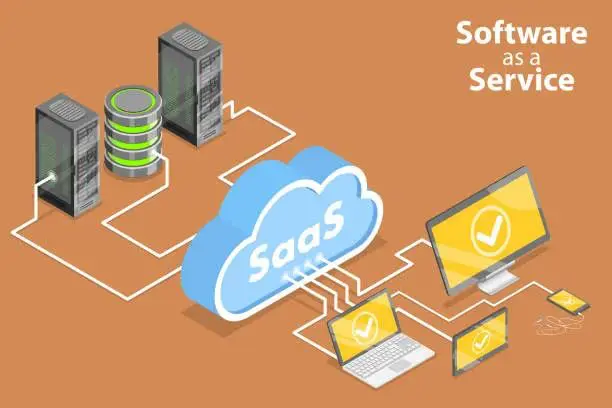
Software as a service application can also be referred to as web-based software, software that is available on demand, or hosted software. No matter what they are called, apps offered as a service are always operated on the servers of the service provider. The service provider is responsible for managing permissions, including aspects such as performance, availability, and safety.
Additional reading: Cloud Vs SaaS: The Main Difference Everyone Should Know
What Types of SaaS are Dominating the Industry?
The horizontal model is currently the most popular option in the SaaS industry.

All of the top ten mentioned SaaS solutions are well-known firms that provide goods that are applicable in a variety of fields and may be utilized by a variety of businesses. It’s possible that the multiple advantages that horizontal SaaS models offer are the reason for their success in this market not just for the developer but also for the users of their products.
For example, a horizontal software as a service (SaaS) has a large target audience and is aimed at a market of potential customers that is more approachable and straightforward to communicate with. Customers are already familiar with huge horizontal SaaS firms, which makes it faster and easier to launch new products to the market.
They offer a solution that is both efficient and affordable for their clientele. Take, for example, the decision to make only a single investment in a commercial software system. This means that all of your marketing and project management requirements may be met with just one platform. This may then result in improved coordination among the many internal teams serving the client. e.g.
- Gong ( Gong Revenue Intelligence PlatformTM records and interprets every customer encounter, then offers insights at scale, helping sales teams to make data-driven choices. )
- Salesloft ( Salesloft is an engagement tool that helps teams create and execute a cadence of messages. Sales management can be certain their agents are using the most successful selling process with email tracking, an integrated dialer, and social communications. )
- Sendoso ( Sendoso integrates digital and physical sending tactics into mission-critical revenue processes.
Also Read: A Detailed Guide to the Types of Software
Different Types of SaaS Solutions
There is a wide variety of software that is offered as a service. The area or sector that the SaaS product enhances, such as internet banking or communication, is the primary consideration in the process of categorizing customers into categories.
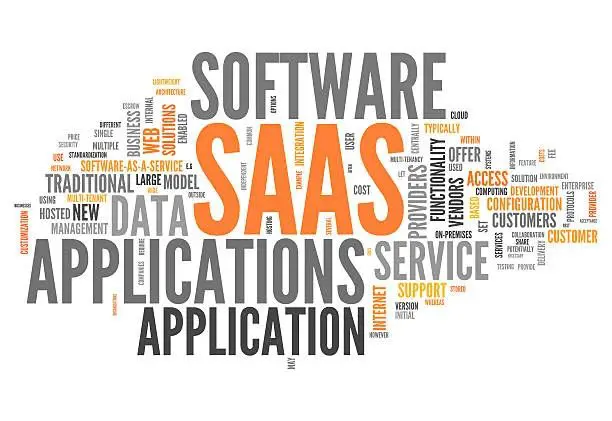
The fact that new categories of SaaS solutions will be introduced in the not-too-distant future is most likely the component of the separation of SaaS apps that is of the utmost significance. It would appear that a software solution that is hosted in the cloud may be utilized in virtually every aspect of human endeavor. As a result of the Covid-19 epidemic, an increasing number of individuals are seeking methods to work from home. Due to the fact that SaaS apps can be used from any location in the globe, their popularity is expected to increase.
Therefore, as we wait for the new types of SaaS that are going to be released in the near future, the ones that are currently available are as follows:
- Customer Relationship Management (CRM) software
- Enterprise Resource Planning (ERP) Software
- Accounting software
- Project Management Software
- CMS and e-commerce platform
- Communication platforms
- HR/HRM solutions
- Payment Gateways and Billing Solutions
Read More About: Vertical SaaS vs Horizontal SaaS: Differences & Similarities
1) Customer Relationship Management (CRM) software
The information collected from customers is a resource that is priceless to any company. CRMs make it possible for companies to compile and retain all of their client data in a way that is both efficient and safe. It is possible to strengthen customer connections, customer segmentation, and data security by efficiently keeping customer data.
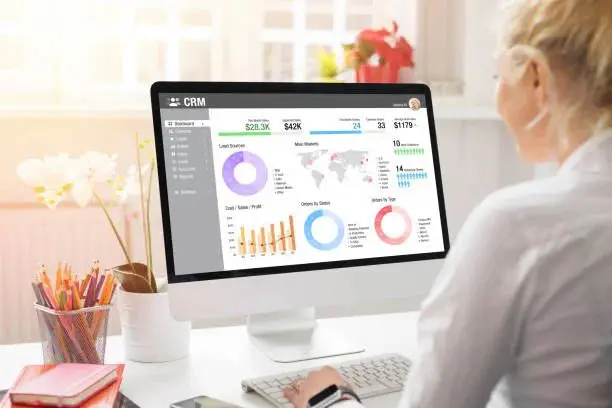
Businesses that cater directly to end users are the most prevalent users of customer relationship management software (CRM). Teams in charge of customer care, marketing, and sales are typically the ones that make use of CRM software inside an organization. Users of CRM software are given the ability to automate routine Operations, generate sales reports and forecasts, and scale up procedures over time. They are able to handle communication with customers and manage client data to a central database throughout your complete organization. This applies to both communicate with customers and data on customers. Some common examples are:
2) Enterprise Resource Planning (ERP) Software
Large corporations and industries make use of this software as a service platform to manage an extensive variety of business procedures.
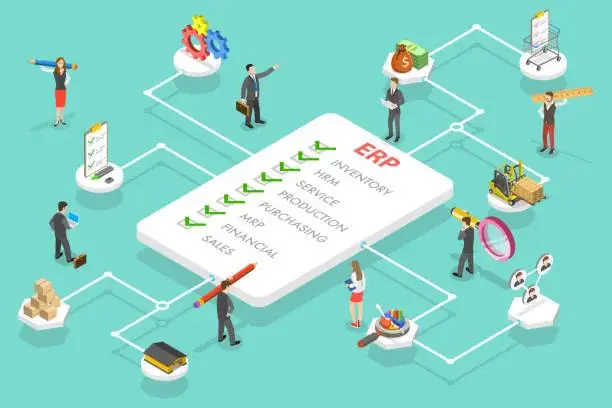
Among these include budgeting, risk management, accounting, and compliance requirements. Because it offers so many different services, this kind of SaaS makes it possible to consolidate and monitor all of these activities in one location.
Some famous ERP systems are:
Additional reading:
- What Is an Enterprise Application? A Complete Guide
- 7 Best Types of Enterprise Applications for Every Organization
3) Accounting Software
It is essential for every kind of organization to have accurate financial records. As a result, account and billing software systems that are delivered via SaaS may provide users with a wide variety of advantages. They assist you in monitoring your cash flow as well as your transactions and budgets. When it comes to managing a company’s finances, utilizing a SaaS application may assist save time and effort on both fronts. In particular, the number of hours spent in reconciling accounts, correcting financial problems, entering data, handling payroll and taxes, and collecting payments from customers.

Banking, businesses, manufacturing, retail, and even the government are all examples of typical industries that use account and/or billing software provided by SaaS providers.
Examples of accounting software are:
4) Project Management Software
Businesses are juggling many projects at the same time, or at the very least, projects are being juggled within teams. Software as a service (SaaS) for project management is a system that may assist companies or teams in remaining organized and can keep track of their active projects. They offer the capability of planning, tracking, allocating, scheduling, communicating, and collaborating with other members of a team on a project all inside a single location.
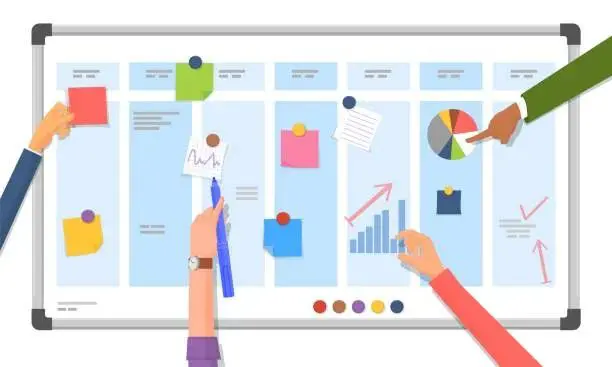
PM SaaS offers the ability to display the development of the project and monitor who on your team has done what tasks. SaaS applications for project management are most frequently utilized by corporations operating in bigger markets, particularly in the Service (IT and Consulting), Financial, Marketing, and Advertising sectors.
Examples of PMS are:
5) CMS and E-commerce Platforms
A content management system, or CMS, is often some kind of web-based application or a low-code toolkit that allows users to more easily construct websites or apps. It does not need the user to know how to program or have any other kind of technical expertise in order for them to be able to create, manage, and alter information.
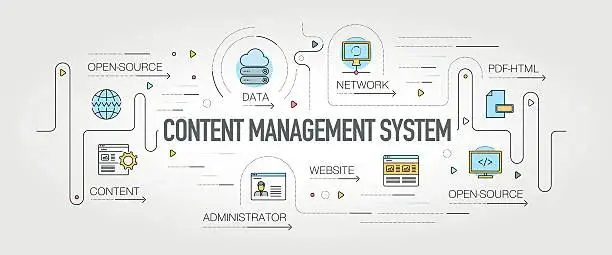
One excellent example of a content management system (CMS) that offers structural components for websites is WordPress. Shopify is a good example of an e-commerce platform since it enables businessmen to add goods, modify information, and track changes.
There are a great number of advantages associated with using content management systems. They are simple to use, can be deployed rapidly, require little in the way of upkeep and maintenance, are affordable, and can be scaled easily. In addition, they offer built-in advantages for search engine optimization. When it comes to promoting new goods, publishing articles, or managing social media accounts, CMS systems are utilized in a wide range of different businesses.
The terms “Enterprise Resource Planning” (ERP), “Customer Experience,” “Marketing/Email,” and “Product Management” are examples of some of the other common types of SaaS solutions.
Examples of CMS are:
Read also: Webflow vs WordPress: Which One Should You Use?
6) Communication platforms
Communication SaaS applications experienced explosive growth in usage over the past 12 months due to teams going remote amid COVID. Typical office techniques such as email, phone calls, and in-person meetings have been supplanted by messaging, and video/audio conversations as a result of the proliferation of communication-based software solutions.
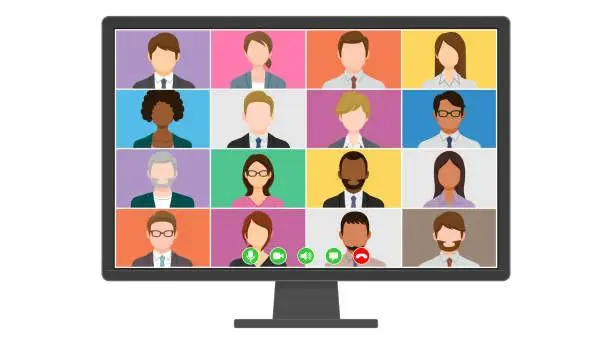
These are popular software as a service (SaaS) products. The ability to send immediate messages and share files with people in any area of the world is the primary benefit offered by communication platforms. These applications are frequently utilized by organizations as a means of facilitating communication among their staff members.
Employees are able to exchange and discuss projects when software as a service (SaaS) for communication is coupled with software as a service (SaaS) suppliers for collaboration, such as Google Drive. Having features such as getting automated in-app alerts whenever updates are made is one example of what may be done. A streamlined service, improved teamwork, and centralized communication are all provided in one convenient location.
Read More About: Major Tips for Transitioning from a Developer to CTO
Most of the time, these communication platforms also provide mobile applications. These mobile applications enable users to connect with the networks of their friends and colleagues and obtain all of the relevant information at any time.
Examples of communication SaaS are:
7) HR/HRM solutions
There is a department of human resources (HR) located in each and every business. They are accountable for managing and providing assistance to staff members, whether it be in the form of recruiting training, or the management of benefits packages.

The management of human resources is the focus of this software as a service solution. Such programs include functions such as employee evaluations, progress reports and analysis, scheduling of job interviews, and recruiting of potential candidates. Because they enable the storage of all information on applicants in a single location, they are particularly useful to businesses that are always expanding and bringing on new employees.
Users at commercial enterprises stand to have access to a variety of advantages when they use HR SaaS software solutions. The capacity to effectively manage personnel in relation to work schedules, vacation time, sick leave, etc. The program is also able to monitor the performance of employees, as well as their length of service to the organization, and it may assist in the recruitment and retention of important personnel. The human resources department of a company is an essential component since it serves as the conduit for information dissemination and employee communication. Keeping employees informed, involved, and productive in their work is essential to the development of a culture of collaboration inside the firm.
Examples are:
8) Payment Gateways and Billing Solutions
Payment gateways make it possible for businesses to process thousands of transactions every day in a quick and simple manner so that they may accept payments.

This is an easy and practical method for any kind of company to collect payments, as it involves the exchange of confidential customer data between banks and merchants, hence removing the possibility of data being compromised.
Processing financial transactions manually take significantly more time than doing it online, which is another advantage of using a payment gateway.
A further advantage of using such software is that it provides payment reporting, which makes it possible for you to indicate or flag any form of questionable behavior or payments. Publishing reward coupons are a fun function that can be found in some of the online payment gateways. It is a simple item that can be used to both attract consumers and delight them.
Conclusion
The use of software as a service (SaaS) solutions helps handle a wide variety of problems across a variety of domains and makes the everyday lives of millions around the world significantly simpler. Each category of software offered as a service (SaaS) has its own unique method for resolving a user’s specific issue, whether it be the processing of a credit card payment, the transmission of a file to a manager, or the generation of a task board for a group of employees.
Read More About: The Comprehensive Guide to Startup CTO
FAQs
What are the types of SaaS?
There is a diverse selection of software as a service (SaaS) applications available. The following is a list of popular types of software that are offered as a service and can assist both your company processes and its users:
CRM
ERP
Accounting Software
Project Management
HR Software
How many types of SaaS are there?
Horizontal and vertical SaaS models exist. ( 2 types )
Salesforce, Microsoft, Slack, Hubspot, etc. employ horizontal SaaS. The horizontal approach allows huge firms to successfully and efficiently serve a broad consumer base across sectors. The model simplifies growth and bundling. They can add many SaaS categories to their offerings. Google and Microsoft created Google Hangouts and Microsoft Teams, respectively.
Vertical SaaS solutions target a specialized sector. Insurance, trade, and underserved industry are examples. The concept focuses on industry verticals and solves pain areas and demands. Guidewire, a SaaS service that creates insurance software, or Toast restaurant software.
SaaS apps provide corporate, industry, or customer-specific software solutions.
What type of company is SaaS?
Software as a service, often known as SaaS, is a business model for the distribution of software goods over the internet. In this model, customers obtain the software products they require through the cloud instead of by installing the software products themselves.



